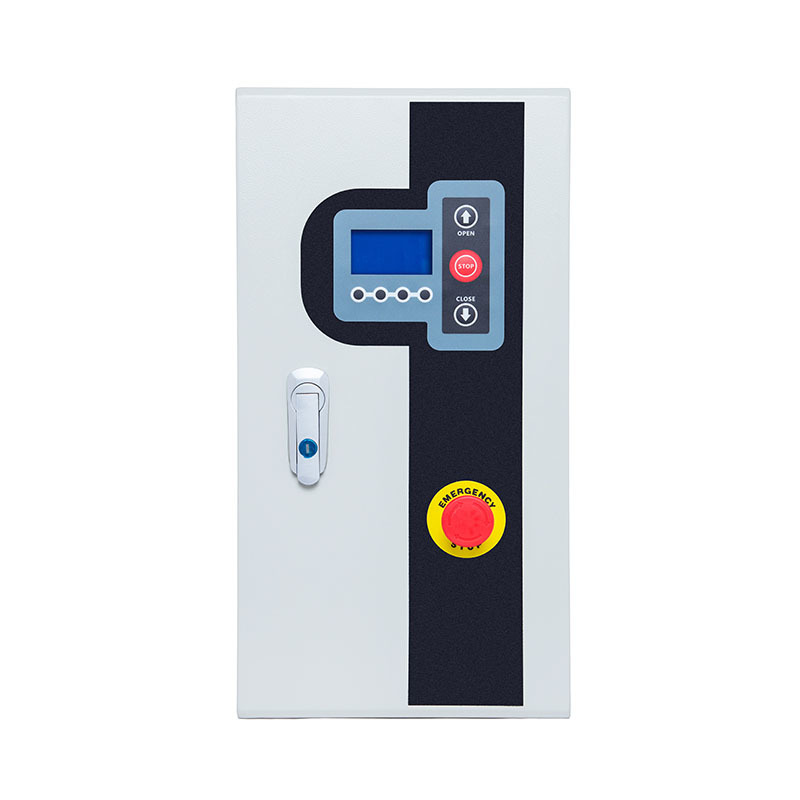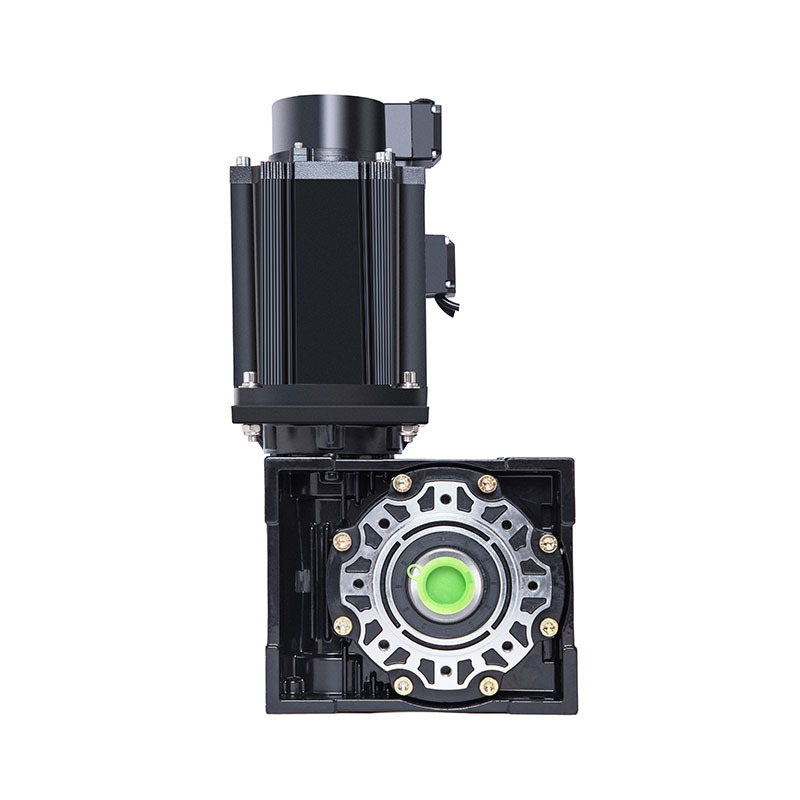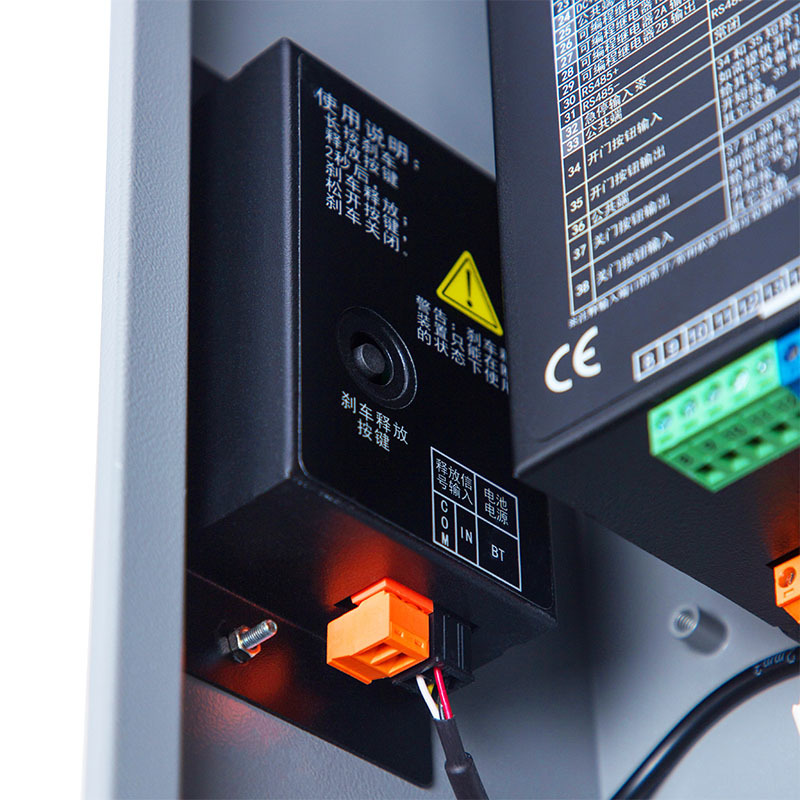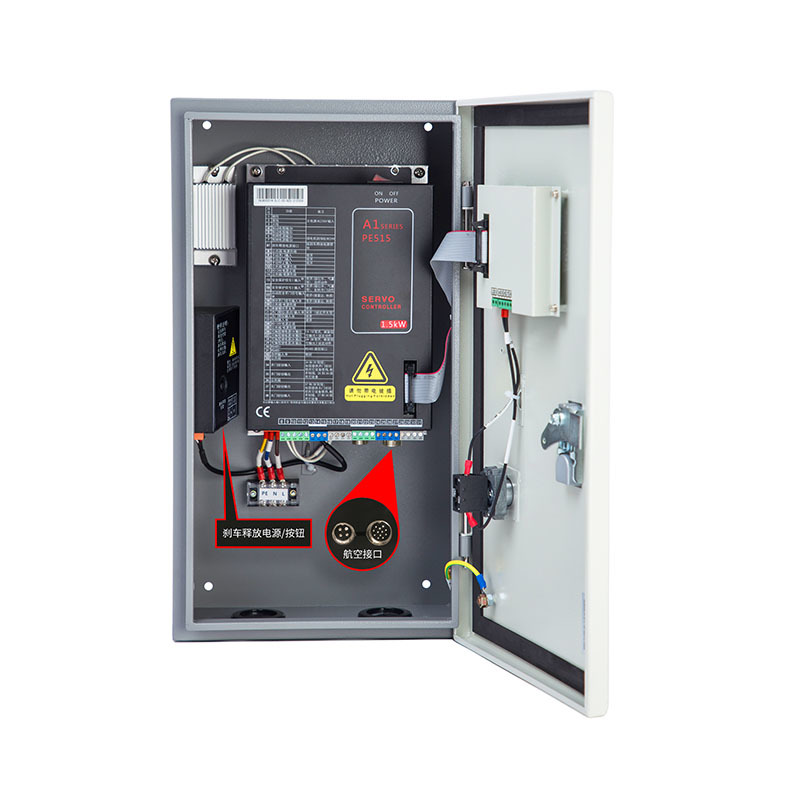10
2025
-
07
High-speed door control system
High-speed door control systems are critical equipment in modern industrial, logistics, and cleanroom environments. They require the door to open and close quickly while ensuring safety, reliability, durability, and intelligence. The core elements of a high-speed door control system are detailed below:
**Core Objectives:**
1. **Ultra-fast Response and Operation:** Achieving millisecond-level response and high-speed lifting and lowering (typically 1.0 - 2.5 meters/second).
2. **Precise Positioning:** Achieving millimeter-level accuracy in opening and closing stops during high-speed operation.
3. **High Safety:** Ensuring the safety of personnel, vehicles, and goods in transit, preventing collisions and pinching.

4. **High Reliability:** Adapting to frequent starts and stops (hundreds or even thousands of times a day), and harsh environments (temperature, humidity, dust).
5. **Intelligent Control:** Flexibly responding to multiple trigger signals to achieve automated process integration.
6. **Energy Saving and Sealing:** Rapid opening and closing reduces air exchange, maintaining indoor temperature/humidity/cleanliness, and reducing energy consumption.
7. **Low-Noise Operation:** Reducing interference with the working environment.
## Main Components of a High-Speed Door Control System
1. **Drive Unit:**
* **Motor:** The core power source.
* **Servo Motor:** **Preferred Solution**. High precision, fast response, high torque, strong overload capacity, smooth start and stop, and precise control of speed and position. It is the core of the high-speed door control system.
* **Variable Frequency Motor + Inverter:** Speed control via inverter, better performance than ordinary AC motors, lower cost than servo systems, but precision, response speed, and dynamic performance are usually inferior to servo systems.
* **DC Motor:** Good speed regulation performance, large starting torque, but relatively high maintenance cost, and applications are gradually decreasing.
* **Gearbox:** Converts the high speed and low torque of the motor into the low speed and high torque required by the door. Usually a precision planetary gearbox or worm gear gearbox.
* **Brake:** Ensures that the door can stop quickly and reliably in the event of a power failure or stop signal, preventing slippage. Usually an electromagnetic brake.
2. **Control Unit (Controller/PLC):**
* **Core Brain:** Receives sensor signals, processes logic, and issues commands to control motor operation.
* **Functions:** 
* Processing various opening/closing signals (sensors, buttons, remote control, interlocks, etc.).
* Achieving precise speed curve control (acceleration, constant speed, deceleration).
* Achieving precise positioning stop control (usually combined with encoder feedback).
* Managing safety functions (emergency stop, safety circuit).
* Parameter settings (operating speed, acceleration/deceleration time, travel limit, delayed closing, etc.).
* Fault diagnosis and alarm.
* Optional: Network communication (Ethernet, CANopen, Modbus, etc.) for integration into higher-level systems (SCADA, MES).
3. **Position Detection and Feedback:**
* **Rotary Encoder:** **Key Component**. Installed on the motor shaft or drive shaft, it provides real-time feedback of the motor's rotation angle and speed to the controller, achieving closed-loop control. This is the core of achieving precise positioning. Incremental or absolute encoders are commonly used.
* **Travel Limit Switch:** Mechanical or proximity switch, serving as physical limit position protection (hard limit), preventing overtravel. Usually serves as a redundant backup or ultimate protection for encoder positioning.
4. **Trigger and Signal Input Devices:**
* **Radar Sensor:** Detects moving objects (personnel, vehicles) to achieve contactless automatic opening. Strong anti-interference ability, suitable for various environments.
* **Geomagnetic Induction Coil:** Buried underground, detects the passage of metal objects (vehicles) to trigger the door opening.
* **Photoelectric Sensor (Light Curtain/Grating):** Forms an array of light beams on both sides of the doorway to detect obstacles, mainly used for safety protection, but can also be used for triggering (such as through-beam type).
* **Manual Button:** Wall switch or remote control for manual operation by personnel.
* **Pull Rope Switch:** Emergency stop switch arranged along the edge of the door, pulling the rope immediately stops the door.
External signal input: such as interlocking signals with conveyors, rolling doors, air showers, etc.
5. Safety Protection Devices:
Safety light curtain/grid: **Most important**. Forms a protection zone below the door opening or at the edge of the curtain. If the light beam is obstructed, the door immediately stops or reverses. Must comply with relevant safety standards (such as IEC 61496, PL d/e).
Bottom safety edge: A strip installed at the bottom of the curtain, containing a pressure-sensitive airbag or sensing strip. If an obstacle is encountered during door descent, pressure is generated, triggering a stop or upward movement.
Emergency stop button: Installed in a prominent location, pressing it immediately cuts off power and locks the brake.
Safety relay/safety controller: Constructs a safety circuit, monitoring all safety inputs (light curtain, safety edge, emergency stop), ensuring that any safety signal trigger reliably executes safety actions (such as cutting off motor power, triggering the brake).
Anti-fall device (mechanical/electronic): Prevents the curtain from falling unexpectedly due to broken ropes, belts, or drive failures.
6. Human-machine interface (optional):
Operation panel: Displays status (on/off/fault), sets parameters, and allows manual operation.
Indicator lights: Indicate the door status (running, in place, fault).
Remote monitoring interface: Remote status viewing, parameter setting, and fault diagnosis via network.
## Key Technologies and Features of High-Speed Door Control Systems
1. Closed-loop servo control: Using encoder real-time feedback, the controller accurately calculates and adjusts the motor output to achieve smooth start/stop and precise positioning at high speed. This is the core technology of modern high-speed door systems.
2. Optimized speed curve: Controls the acceleration, constant speed, and deceleration processes to reduce impact, improve smoothness, and increase mechanical life.
3. Multiple safety redundancies:
Safety circuit independent of the main control system.
Hard limit + soft limit (encoder positioning).
Safety light curtain + bottom safety edge.
Redundant brake design (such as dual brakes). 
4. Intelligent logic:
Delayed closing function.
Anti-pinch reversal function (automatically rises a certain distance after the safety edge is triggered).
Interlocking function (such as linkage with air showers, interlocking doors).
Multiple opening modes (full open, half open).
Learning function (automatically learns the door travel).
5. Durability and environmental adaptability:
Key components (motor, controller, encoder) require high protection levels (such as IP65).
Adaptable to a wide temperature range.
Resistant to dust, moisture, and corrosion.
Anti-electromagnetic interference design.
6. Diagnosis and maintenance:
The controller records the number of operations and fault codes.
Easy for troubleshooting and maintenance.
## Application Scenarios
Logistics warehouses and distribution centers: Loading and unloading platforms, sorting areas, passageways.
Manufacturing: Production workshops, clean rooms, cold storage, painting workshops. 
Food and beverage and pharmaceuticals: Areas with high hygiene and sealing requirements.
Airports and transportation hubs: Baggage handling, cargo passages.
Large shopping malls and parking lots: Pedestrian and vehicle separation channels.
Any place that requires frequent, fast passage, environmental isolation, and energy saving.
## Considerations When Choosing a High-Speed Door Control System
1. Door size and weight: Determines the required motor power and torque.
2. Required speed: Specify the required opening/closing speed.
3. Usage frequency: Number of operations per day or per hour.
4. Environmental conditions: Temperature, humidity, dust, corrosiveness, cleanliness requirements.
5. **Safety Requirements:** Personnel density and vehicle traffic frequency determine the safety level (PL level).
6. **Control Requirements:** What trigger methods are needed? Is networking required? Is interaction with other devices required?
7. **Budget:** Servo systems offer optimal performance but are more expensive; variable frequency systems are a cost-effective alternative.
8. **Brand and After-Sales Service:** Choose a reliable brand and a supplier that provides good technical support.
## Summary
A high-speed door control system is a complex system integrating precision mechanics, power electronics, automatic control, and sensing technologies. Servo drives combined with closed-loop control using high-precision encoder feedback are the standard configuration for modern high-performance high-speed doors. Its core value lies in significantly improving passage efficiency, ensuring operational safety, optimizing environmental control, and reducing operating costs through extreme speed, precise positioning, and multiple safety safeguards. When selecting and designing the system, the specific needs of the application scenario, safety regulations, and long-term reliability must be considered comprehensively.
Related News

Mobile Site
Tianjin Shunpeng Intelligent Equipment Co., Ltd. | Powered by www.300.cn | SEO | Privacy Policy



